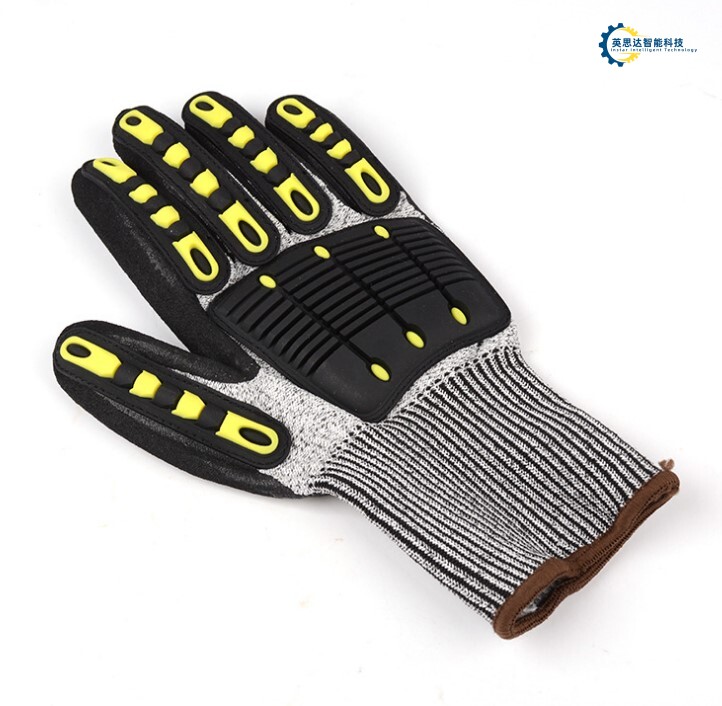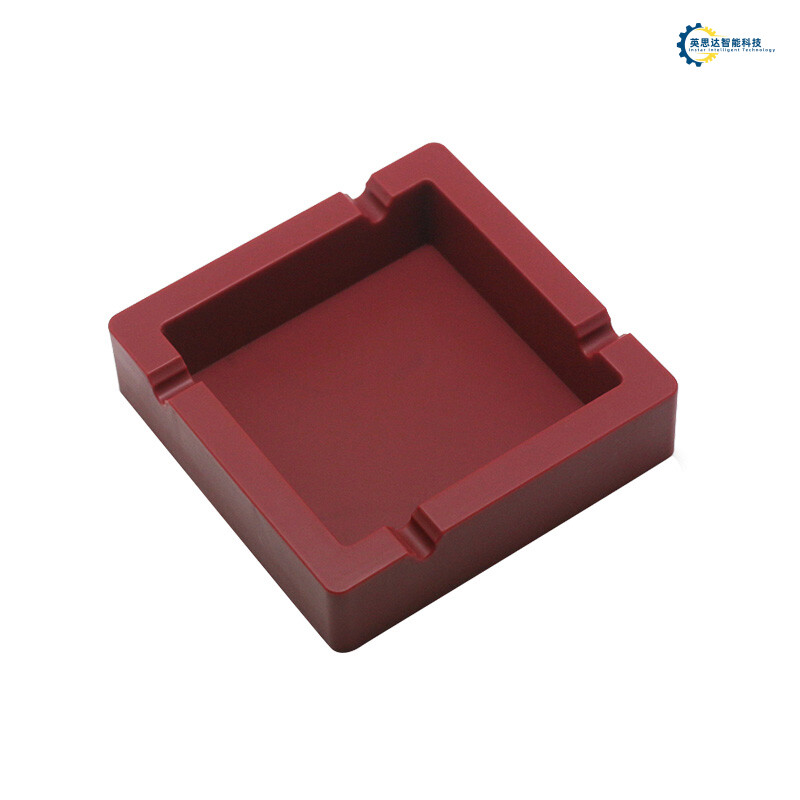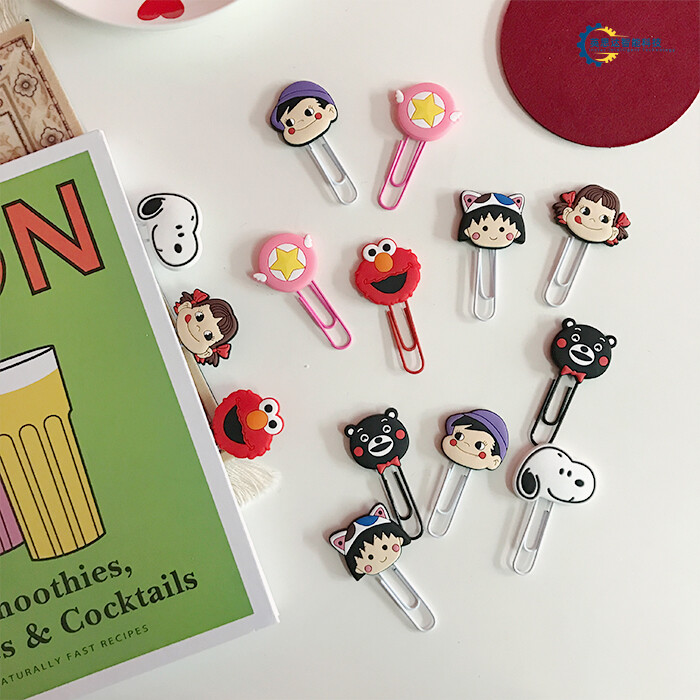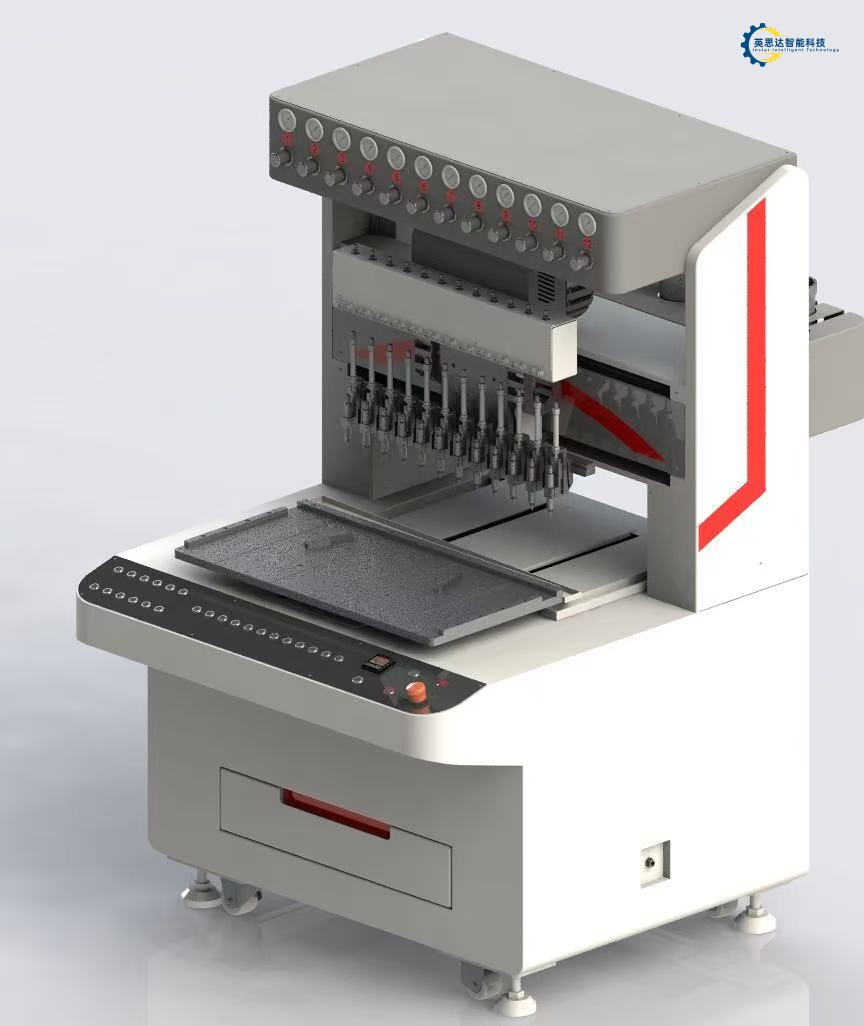Key Takeaways
So, you’re staring down the PVC patch machine battlefield like it’s a gladiator arena, huh? Let’s break down the chaos without losing a finger (or your sanity). First off, PID temperature control isn’t just alphabet soup—it’s the difference between your patches looking like melted crayons or crisp military badges. Imagine a robot chef that’s obsessed with perfect oven temps. Now, pair that with hydraulic systems in 3D presses, which are basically the yoga masters of machinery—steady, calm, and refusing to spill your metaphorical kombucha.
“If your machine can’t handle a military-grade patch without whimpering, it’s time to upgrade—or start selling macramé instead.”
Speed demons might brag about churning out patches faster than a TikTok trend, but 3D precision is where the magic happens. Think of it as choosing between a spray-paint artist and someone hand-stitching a Mona Lisa on a postage stamp. Sure, the speedy option wins at “quantity,” but do you really want your tactical patches looking like they survived a blender?
Pro tip: Test your machine’s durability by asking it to print something that’d make a Marine blush. If it survives, you’ve got a winner. If not… well, at least you’ll have a funny story for Reddit.
And hey, if you’re debating single-color vs. multi-color systems, remember: more colors mean more chances for things to go spectacularly wrong. It’s like herding cats, but with molten PVC. Choose wisely, unless chaos is your brand.

PVC Patch Machine PID Control Comparison
When it comes to PID controllers in PVC patch machines, it’s like watching a thermostatically challenged robot try to bake cookies—precision is everything, but chaos is always one misstep away. 3D precision machines treat temperature control like a neurotic chef, obsessing over every decimal point with PID algorithms that tweak heat settings faster than a caffeinated squirrel. Meanwhile, high-speed machines? They’re the “set it and forget it” crowd, relying on PID systems that basically yell, “Close enough!” while churning out patches at speeds that’d make Usain Bolt jealous.
Let’s break it down:
| PID Type | 3D Precision Pros | Speed Machine Quirks |
|---|---|---|
| Temperature Control | “Goldilocks mode” (not too hot, not too cold) | “Eh, 5°C over? Add glitter, call it art!” |
| Response Time | Faster than a TikTok trend | Sloth-paced, but gets the job done…eventually |
| Material TLC | Kisses military-grade fabrics goodnight | Treats PVC like a microwave dinner |
The real drama? PID tuning in 3D machines requires the patience of a monk—too aggressive, and your hydraulic system starts hissing like an angry cat. Too lax, and your patches look like they survived a blender. High-speed PID systems, though? They’re the “hold my energy drink” of the patch world, prioritizing throughput over finesse. Sure, you might get the occasional temperature swing that turns your design into abstract art, but hey, speed thrills!
Pro tip: If your PID controller were a dating profile, 3D machines would be “sensitive and detail-oriented,” while speed demons would just say, “Swipe right if you like living on the edge.” Choose wisely—unless you enjoy explaining to clients why their military-grade patch now resembles a Salvador Dalí painting.

Hydraulic System Stability in 3D Presses
Imagine trying to balance a flamingo on a unicycle while juggling rubber chickens—hydraulic systems in 3D PVC patch presses face a similarly absurd challenge. These machines aren’t just stamping patches; they’re performing high-stakes acrobatics with molten PVC. A wobbly hydraulic system here is like a caffeine-addicted surgeon—precision goes out the window, and suddenly your military-grade eagle patch looks more like a startled pigeon.
The secret sauce? PID temperature control isn’t just a fancy acronym—it’s the machine’s zen master, whispering, “Breathe…steady…don’t crush the patch into oblivion.” Pair that with a hydraulic system smoother than a buttered otter, and you’ve got pressure distribution so even, it could teach a yoga instructor about balance. But here’s the kicker: material versatility means these presses handle everything from rugged military fabrics to “oh no, why is this stretchy?” spandex blends. One wrong move, and your 3D press might yeet a patch into low Earth orbit.
Meanwhile, cheaper machines? Their hydraulics rattle like a haunted dishwasher. You’ll get patches with all the consistency of a toddler’s finger-painting—military-grade durability this is not. So, if your patches need to survive a zombie apocalypse and look Instagram-ready, invest in hydraulics that don’t ghostride the struggle bus.

Military-Grade Patch Material Compatibility
When your PVC patch machine is tasked with handling military-grade patches, it’s like asking a housecat to wrestle a tiger—things can get hairy fast. These patches aren’t your average “I ❤️ Camping” flair. They’re built to survive everything from desert sandstorms to being mistaken for chew toys by overly enthusiastic guard dogs. The real challenge? Making sure your machine doesn’t throw a tantrum when faced with polyester-backed fabrics, nylon webbing, or the dreaded PTFE-coated materials (because apparently, “non-stick” doesn’t apply to patience).
3D precision presses with PID temperature control act like overachieving valedictorians here, carefully adjusting heat settings to avoid melting your patch into a modern art puddle. Meanwhile, high-speed machines might be tempted to yell, “Speed first, questions later!”—which works great until your Kevlar-reinforced patch decides it’d rather impersonate a crinkle-cut fry. Compatibility isn’t just about materials; it’s a dance between pressure settings, hydraulic system stability, and not accidentally inventing a new type of abstract expressionism. Pro tip: If your machine can handle Velcro-backed patches without sounding like a dying lawnmower, you’re probably winning. Just don’t ask it to process unicorn glitter fabric—some battles aren’t worth fighting.
High-Speed PVC Machine Throughput Analysis
If high-speed PVC machines were animals, they’d be cheetahs hopped up on espresso—built to zoom. These throughput champions crank out patches faster than a toddler demolishing a cookie jar. But speed isn’t just about raw velocity; it’s a delicate dance between material compatibility, hydraulic system reflexes, and not accidentally turning your workspace into a plastic-themed Jackson Pollock painting.
Imagine this: A machine gulping down military-grade patches like they’re nachos at a Super Bowl party. The secret sauce? PID temperature control that’s more precise than your grandma’s knitting needles, paired with heat plates that work harder than a yoga instructor during goat yoga season. But here’s the kicker—Teflon-coated surfaces aren’t just for non-stick pancakes. They ensure your patches slide off the press smoother than a politician’s apology.
Of course, speed demons face hurdles. Push too hard, and you’ll trigger material jams that’ll make your machine cough like a cat with a hairball. That’s where cycle times matter. Think of it as a relay race: If the hydraulic pistons don’t hand off the pressure smoothly, your production line becomes a slapstick comedy of errors. And nobody wants to explain why their “high-speed” machine is moving slower than a sloth on melatonin.
Pro tip: If your machine’s throughput starts resembling a snooze button, check the pressure calibration. It’s the difference between a well-oiled rocket and a lawnmower pretending to be a Ferrari. Just remember—while these speedsters dominate volume, they’ve got about as much patience for intricate 3D details as a toddler with a glitter bomb. Stay tuned for the next act, where we pit these speed demons against the precision tortoises! 🐢💨

3D Precision vs Speed: Key Tradeoffs
Picture this: 3D precision machines are the meticulous painters of the PVC patch world, obsessing over every micron like a cat judging your life choices. Meanwhile, high-speed PVC machines are the caffeinated hamsters on a wheel, cranking out patches faster than you can say, “Wait, did that logo just blink at me?” The battle here isn’t just tech specs—it’s a philosophical showdown. Do you want a machine that treats temperature control like an OCD grandma (thanks, PID temperature control) or one that’s basically the Flash with a hydraulic system?
Here’s the kicker: hydraulic systems in 3D presses are like yoga instructors—steady, balanced, and weirdly calm under pressure. But speed demons? Their hydraulics resemble a toddler on a sugar rush. Sure, they’ll churn out 500 patches before lunch, but ask them to handle military-grade patches with intricate textures, and they’ll panic like a chef asked to julienne a marshmallow.
Oh, and material versatility? Precision machines laugh at “challenging fabrics,” adapting like a foodie at an all-you-can-eat buffet. Speed machines? They’re the picky eaters—stick to the menu or risk a meltdown. Pro tip: If your patches need to survive a zombie apocalypse (cough durability testing), maybe don’t let Speedy Gonzales near them.
The real plot twist? Energy efficiency. Those PID-controlled perfectionists sip power like fancy tea, while speedsters guzzle electricity like teenagers at an open soda fountain. Choose wisely—your patches (and your utility bill) will thank you.

Energy Efficiency in Patch Production
Let’s talk about energy efficiency—the unsung hero of PVC patch production, quietly saving the planet one sparkly military emblem at a time. Imagine your hydraulic system as a gym bro: it’s powerful, sure, but it guzzles power like a frat house chugging energy drinks. Meanwhile, PID temperature control is the neurotic chef in the kitchen, obsessively adjusting the oven to avoid burning the cookies (or, in this case, melting your 3D precision patches into gooey blobs).
Here’s the kicker: high-speed machines are basically the Usain Bolt of patch-making—fast, flashy, and famously thirsty. They’ll sprint through orders like a caffeinated squirrel, but your electricity bill might start resembling a superhero’s phone number. On the flip side, 3D precision presses are more like marathon runners: slower, steadier, and way better at conserving energy (though they’ll still judge you for not recycling).
Pro tip: Pair material versatility with smart scheduling. Running your machine during off-peak hours is like hitting the energy-saving “happy hour”—same productivity, half the guilt. And if your military-grade patches demand a perfect cure? Think of it as baking a soufflé: rush it, and you’ll end up with a sad, undercooked mess. Slow and steady wins the energy-efficient race… or at least keeps your boss from side-eyeing the utility bill.

Durability Testing for Military Applications
If PVC patches were soldiers, military durability testing would be their boot camp from hell. Imagine a salt spray chamber that’s basically a tropical storm in a box, laughing maniacally while dousing patches in corrosive mist. Or UV resistance trials where patches sunbathe under lights brighter than a disco ball at a ’70s reunion—except instead of getting a tan, they’re proving they won’t fade after six months in a desert warzone.
But the real star? The abrasion test, where patches get rubbed raw by machines that mimic everything from sandpaper hugs to Velcro divorces. (Spoiler: If your patch survives this, it can probably survive your cousin’s “hold my beer” ideas.) Engineers even toss patches into freezers colder than a penguin’s inbox, then bake them in ovens hot enough to roast a Thanksgiving turkey—because thermal shock resistance isn’t just a fancy term; it’s what separates “meh” from “military-grade.”
And let’s not forget the peel strength test, where machines yank patches like they’re trying to win a tug-of-war championship. If your emblem stays put, congratulations—it’s earned its stripes. If not? Let’s just say it’s getting a dishonorable discharge.
So, when choosing a PVC patch machine, ask yourself: Does it laugh in the face of accelerated aging? Can it handle more drama than a reality TV show? Because in the military world, “durable” doesn’t mean “kinda tough.” It means “I’ve seen things, and I’m still fabulous.”
Choosing Between Single/Multi-Color Systems
So, you’ve decided to dive into the PVC patch machine rainbow—congrats! Now, the real question is: do you want your machine to be a monochromatic minimalist or a psychedelic disco queen? Let’s break it down without melting your brain like a poorly controlled PID temperature system.
Single-color systems are the “Netflix and chill” of patch production. Simple, reliable, and way cheaper than therapy. They’re perfect for military-grade patches that scream “stealth mode” with one bold hue. But let’s be real—if your design has more personality than a potato, you’ll need multi-color magic. These machines juggle CMYK palettes like a circus clown on caffeine, layering colors with precision that’d make a 3D hydraulic press blush. Sure, setup feels like teaching a cat to tango (good luck with those alignment calibrations!), but the result? Vibrant, complex designs that’ll make competitors cry into their high-speed throughput reports.
Pro tip: If your budget’s tighter than a hydraulic system at full pressure, start single. Upgrade later when your patch empire outgrows its crayon box. Just remember: material versatility matters. That neon pink might look fire on a backpack, but will it survive a military durability test? Choose wisely, Picasso.

Conclusion
So, you’ve reached the end of this PVC patch machine rodeo—where 3D precision struts like a peacock and high-speed leaders zoom by like caffeinated cheetahs. Choosing between them isn’t about picking favorites; it’s about deciding whether you want your patches to look like Michelangelo sculpted them or to produce enough to outfit a small army before lunch. Remember, PID temperature control is like that friend who insists the thermostat must be 72.5°F—annoyingly precise, but your patches will thank you. Meanwhile, hydraulic systems in 3D presses are the yoga instructors of machinery: bendy yet unshakably stable. If your patches need to survive a zombie apocalypse (or just basic military-grade abuse), material versatility isn’t a luxury—it’s a survival skill. Sure, speed machines might guzzle energy like a college student chugs coffee, but hey, nobody ever won a race by sipping herbal tea. In the end, whether you’re Team Tortoise or Team Hare, just make sure your military-grade patches don’t end up looking like a kindergarten art project. Your move, Picasso.

FAQs
Q: Can a PVC patch machine double as my new kitchen gadget?
A: While the PID temperature control might remind you of a fancy sous vide cooker, we don’t recommend baking cookies on it. Stick to melting military-grade patches, not chocolate chips.
Q: Do hydraulic systems in 3D presses ever throw tantrums?
A: Only if you forget their weekly oil massage. Keep them happy, and they’ll smoosh designs with the grace of a ballet dancer—minus the tutu.
Q: Why does my high-speed PVC machine sound like a racecar?
A: Because it’s basically the Formula 1 of patch-making. Just don’t expect pit stops for confetti. Pro tip: Earplugs optional, adrenaline mandatory.
Q: Will material versatility let me print patches out of old socks?
A: Technically? Maybe. Ethically? Let’s not traumatize the military-grade material gods. Stick to approved fabrics—your platoon deserves better than foot fungus chic.
Q: Is energy efficiency code for “nap time” between batches?
A: Sadly, no. It means your machine sips power like a fancy espresso—smooth, quiet, and way less jittery than you after three coffees.
Q: How do I explain durability testing to my cat?
A: “See this patch, Fluffy? It survives tanks. Your claws? Not so much.” Bonus: Use it as a distraction during claw-trimming negotiations.
Q: Single-color vs. multi-color systems—is this a sneaky metaphor for life choices?
A: Yes. Do you crave simplicity (one color, zero drama) or chaos (rainbow confetti explosions)? Choose wisely, Picasso.
Ready to Turn Your PVC Patch Dreams into Less-Weird Reality?
Click here to avoid explaining hydraulic tantrums to your cat. Our experts promise zero sock-based projects. 🚀
